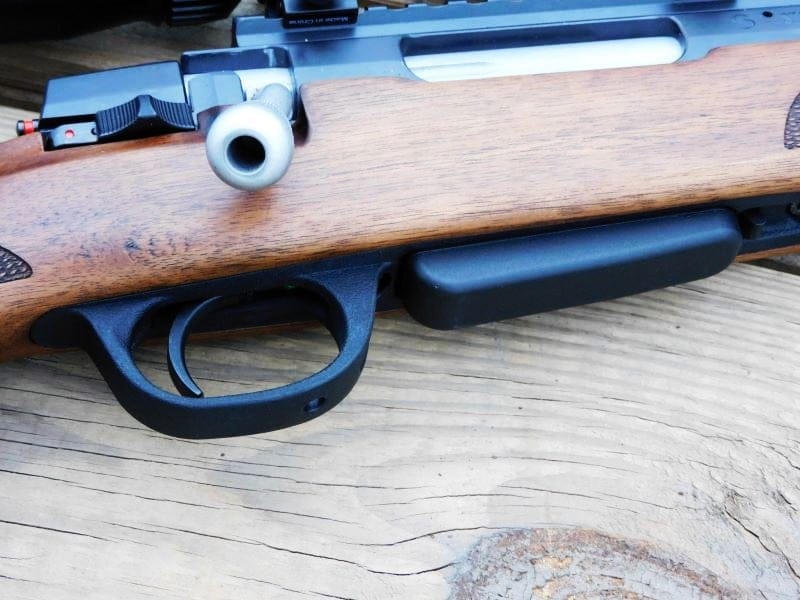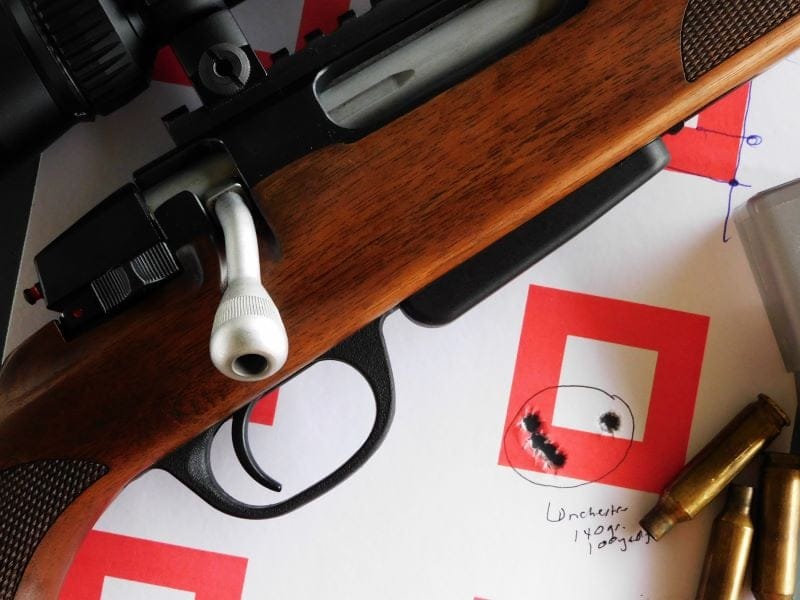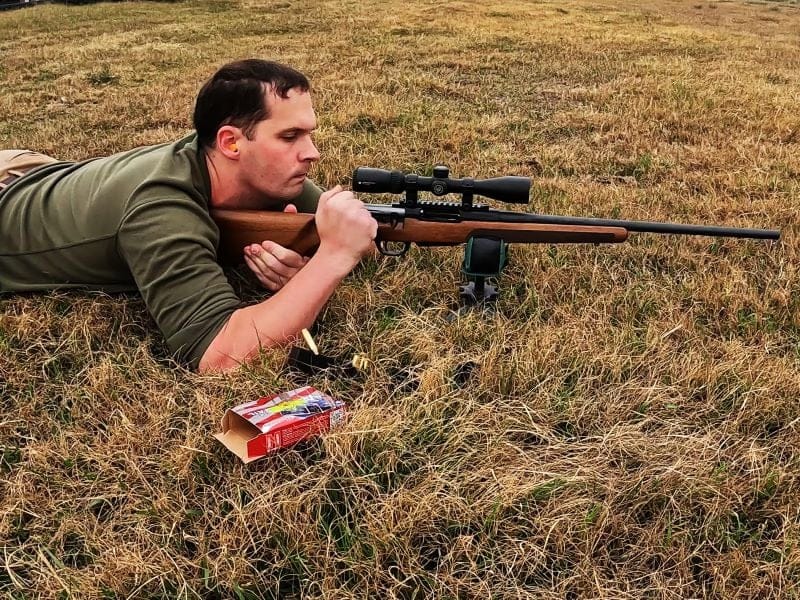When it comes to quality hunting rifles, Savage Arms has always come to my mind. Admittedly, this perception is partly because all the deer hunters in my family carried Savage rifles in calibers from .270 Winchester to .30-06 Springfield. A cousin of mine even carried a Stevens rifle chambered in .243 Winchester. The Stevens line was Savage’s budget series of hunting rifles. It, like the Savage rifles we had, were tack drivers and never failed to put meat on the table. I was the only one amongst us who didn’t carry a Savage. I hunted with a hand-me-down ’94 Winchester as I saved my pennies for something like that Stevens. But the line seemed to disappear before I could spring for one. A few years ago, Savage fully relaunched the Stevens brand with the introduction of a series of single-barrel shotguns meant for minimalist hunting. In 2022, the line returned to the world of rifles with the Stevens 334. This time, I got one.

The Stevens Brand: Then And Now
J. Stevens & Company began firearm manufacturing in Chicopee, Massachusetts, in 1864. Stevens became known for its inexpensive pistols and shotguns before expanding to produce rifles for the Russian government during the Great War. The fallout of the Bolshevik Revolution precipitated Stevens becoming a subsidiary of Savage Arms in 1920. Savage has marketed a budget line of rifles and shotguns under the Stevens brand.
In 1999, the brand was dropped and then resurrected for a less-refined version of the Savage Model 110, known as the Stevens 200. This lone offering was then summarily discontinued in the 2010s. Savage continued to import the pump-action Stevens 320 shotgun, and in 2017, the Stevens line made a full return with the Model 301 single-shot shotguns from 12 gauge to .410 bore.

The Stevens 334 represents the re-entry of the first Stevens rifle since the 200. The Model 334 is a bolt-action rifle with a three-round capacity. The rifle is chambered in .243 Winchester, 6.5 Creedmoor, and .308 Winchester. It is available with either black composite or a Turkish walnut stock. As the wood choice would suggest, the Model 334 is imported from Turkey and it is mechanically different from the Model 200 or other Savage-brand rifles that preceded it.
Stevens 334 Quick Specs:
- Model: 334 Walnut
- Caliber: 6.5 Creedmoor
- Capacity: 3+1
- Sights: Optics-Ready 1913 PIC rail
- Barrel Length: 22 inches
- Overall Length: 43 1/4 inches
- Weight: 8.8 lbs. with optic
- Rifling Twist: 1:8 inches
Stevens 334 Features
The old Stevens models lacked the fit and finish of Savage rifles but tended to be in the same ballpark when it came to putting bullets on target. The new Stevens 334 is a start from scratch, for better and worse. Aside from being a bolt-action magazine-fed rifle, the Stevens has little in common with the current Savage line. But that blank slate allows the 334 to retain the essential features while finding methods to keep costs down.
The 334 comes with either a black composite or checkered walnut stock. Both versions of the 334 come in the same aforementioned chamberings and have a three-round capacity. The 334 comes with a Picatinny rail to mount the optic of your choice and comes with a generous 14.5-inch length of pull on the butt stock, which can accommodate the tallest statured shooters.
The blued barrel has a typical quick-handling tapered profile, but the length will depend on the caliber you choose. The .243 and .308 versions of the Model 334 come with a 20-inch barrel. The 6.5 Creedmoor version wears a 22-inch barrel. The barrel appears to be the heart of Savage’s input. It is free-floated from the stock and wears an 11-degree target crown. The Picatinny rail is tapped and drilled in place on the receiver, but the spacing and screw pitch is the same as the Savage Model 110.

The Stevens 334 has a gently knurled, “in the white” bolt handle that is swept upward at a shallow 60-degree angle for a faster bolt throw that won’t cause interference with the optic.
The bolt body consists of three shallow locking lugs at the front, with the back of the bolt handle acting as another point of lock-up. The red-marked striker can be clearly seen protruding from the bolt shroud when the action is cocked. The safety on the 334 is reminiscent of a Mauser in terms of feedback, albeit it is color-coded and entirely on the right side of the rifle for the firing-hand thumb.

Pushing the safety fully forward renders the rifle ready to fire. Pulling it back fully locks up the trigger and the bolt. When the safety is brushed to the middle, the trigger is locked up, but the action can be cycled. Like the Mauser and most other bolt guns out there, the 334’s bolt can be removed by retracting the bolt and depressing the bolt stop on the left side of the receiver.

Although this version of the Stevens 334 is an archetypical wood and steel gun, there is some room for polymer. The three-round detachable magazine and the trigger guard are made of injection-molded plastic.
The Stevens 334 composite has an MSRP of $389, while the walnut model comes in at $100 more. This puts the rifle at a slight cost savings over the comparable Savage Axis and far less than other budget hunting rifles like the Ruger American, Winchester XPR, and the Mossberg Patriot. Given its standing close to the bottom of its field, one has to ask how well the 334 can hold up. I picked up the Walnut model and paired this new-to-me rifle with a new-to-me 6.5 Creedmoor cartridge, bolted on a Vortex Crossfire II riflescope, and headed for the range.
The Stevens 334 on the Firing Line
I am a thoroughly average rifle shooter. I brought the Stevens 334 for its first range trip with one-hundred-fifty rounds of ammunition, two rifle rests, and no expectations for setting any personal records. It took some time to burn through that stock of ammunition, and despite a few qualms, the Stevens 334 exceeded expectations.
After a thorough bore cleaning, I started my test by zeroing a new Vortex Crossfire II rifle scope. It is a variable 3-9x magnification optic with a 40mm objective. It is excellent glass and price-appropriate for a budget rifle. I sat a paper target at thirty yards, set the Stevens in a Caldwell Matrix rest, and put my first rounds downrange.
The Steven’s 334 magazine is loaded by first pushing the magazine release latch in front of the magazine. With the magazine in hand, thumb three rounds in, and push the magazine back into the well. The magazine is cheaply made and does not sit flush with the bottom of the magazine well. The magazine spring does not have the tightness I am accustomed to with new factory rifles. The magazine loads with the indifference of an old military rifle. In a word, there is no challenge to it. But even without the magazine loaded, the Stevens is simple to load. You can load single rounds by simply retracting the bolt, tossing a round onto the top of the magazine, and bolt forward. After firing some single rounds at 30 yards to get the optic close, I moved the rifle out to 50 and then 100 yards to fully zero the rifle.
Out of the box, the Stevens 334 has a stiff action that binds when the bolt is aggressively pushed forward into battery. But after some pre-shooting cleaning and lubrication and the first ten rounds downrange to sight in the optic, the action smoothed out considerably. When shooting offhand or in the prone, I noticed a bit of the same binding when working the action quickly. It was not nearly as noticeable as out of the box and by the time I had smoked all the ammunition throughout a few range trips, the action on the 334 was smooth no matter how quickly or slowly I ran the rifle.
Although 6.5 Creedmoor aficionados will not get the most satisfaction with the budget hunter like the Stevens 334, this mild-recoiling and flat-shooting round has a lot to offer the big game hunter. Some rounds will shoot better from different rifles and some will shoot worse. So, I allotted different grain weights of hunting ammunition to see what you might expect. I fired five-round groups from the bench at 100 yards. After five rounds, the barrel started to heat up, so I made sure to take a breather between strings. The results surprised me.
| Brand | Muzzle Velocity | Group (100 yards) |
| Winchester Super X 129 grain | 2842 | 1.3 inch |
| Hornady American Whitetail 129 grain | 2877 | 1.0 inch |
| Winchester Accubond 142 grain | 2708 | .72 inch |
| Hornady ELD Match 140 grain | 2684 | .92 inch |
Off the bench, the Stevens 334 is capable of 1 MOA. I am a 3 MOA shooter on a good day. The spire-pointed Accubond and ELD are more match-oriented and gave me the best groups, but the lighter 129-grain soft-point hunting rounds gave more-than-acceptable accuracy.

Out of this 8.8 lb. rifle paired with a generous rubber recoil pad, felt recoil was a soft push, although just enough to make me lose my target in the view of my scope. Accuracy was helped further by the Stevens’ predictable trigger pull. Unlike most Savage rifles, the Stevens uses a conventional single trigger shoe. When the trigger is depressed, there is about a 1/4 inch of slack before the wall. There is a minimal amount of movement before the trigger breaks. The trigger pull weight is a clean 4 lbs. 4 oz. on my Lyman trigger pull scale.

After firing my one-hundred-yard groups and taking chronograph data on each type of ammunition, I got off the bench to shoot the 334 in typical field positions. I shot the 334 on paper once again at 100 yards and on steel torso plates at 300 yards. In the prone position, the 334 and the Crossfire II optic made those 300-yard shots easy.
At 100, I could still get those Winchester Accubond rounds into a 1.5-inch group from a kneeling position. That was thanks, in no large part, to the balance and heft of the rifle. From a standing position, I could hold it steady for a few shots at a time before the weight made me too shaky for a good shot. The composite-stocked 334 is lighter and would probably be less fatiguing to shoot offhand, but the added weight of the walnut model can make those few shots on a hunt count.
Final Thoughts
I grew up as a deer hunter and went to school with plenty of kids who hunted, too. On cue, our grades would drop in the fall and come back in the spring because our minds were always on hunting. But as I got older, I could see fewer kids coming up to the sport, and statistics prove that there are fewer hunters overall year after year.
Despite this seeming wane of demand for hunting, there is ample demand for good hunting rifles. Nowadays, there are more options to cater to an increasingly diverse demographic that’s expecting more out of their rifles. The latest flavor of chamberings, light triggers, and free-floated barrels that were once a luxury is now a given. The latest generation of budget hunting rifles offers many of these features to varying degrees of finesse.
No budget gun is going to meet all expectations out of the box. The Stevens 334, particularly this heavier Walnut model in either .243 or 6.5, would make a great first rifle for a smaller-statured shooter, but the 14.5-inch length buttstock will leave shorter arms reaching for the trigger. Aesthetically, the 334 is well-executed, though the striker housing of the bolt is as blocky as that on a rifle from early hunting simulation games. Likewise, some might not fancy that the magazine and trigger guard are polymer. Each rifle of any brand will have its particular advantages and aesthetic choices. While I cannot compare any of those to the Savage Stevens 334 yet, I can say that the 334 delivers on performance in spades and is worth a look.

